The guitar stands as one of the most beloved and versatile musical instruments in the world. From the soulful strumming of acoustic folk to the electrifying solos of rock legends, guitars have shaped musical culture for centuries. Whether you’re drawn to the warm tones of an acoustic guitar, the expressive possibilities of an electric, or the classical elegance of nylon strings, this guide will walk you through everything you need to know to begin your guitar journey.
Learning guitar opens doors to self-expression, creativity, and a lifelong skill that brings joy to both player and listener. As legendary guitarist Eric Clapton once said, “Music has become the most powerful communication tool we could ever hope to have.” This guide aims to demystify guitars for beginners and provide a solid foundation for your musical adventure.
Types of Guitars
Understanding the different types of guitars is essential for choosing the right instrument for your musical preferences. Each type has distinct characteristics in terms of sound, playability, and suitability for various genres.

Acoustic Guitars
Acoustic guitars produce sound naturally through the vibration of strings amplified by the hollow body. They’re perfect for beginners due to their straightforward design and portability.
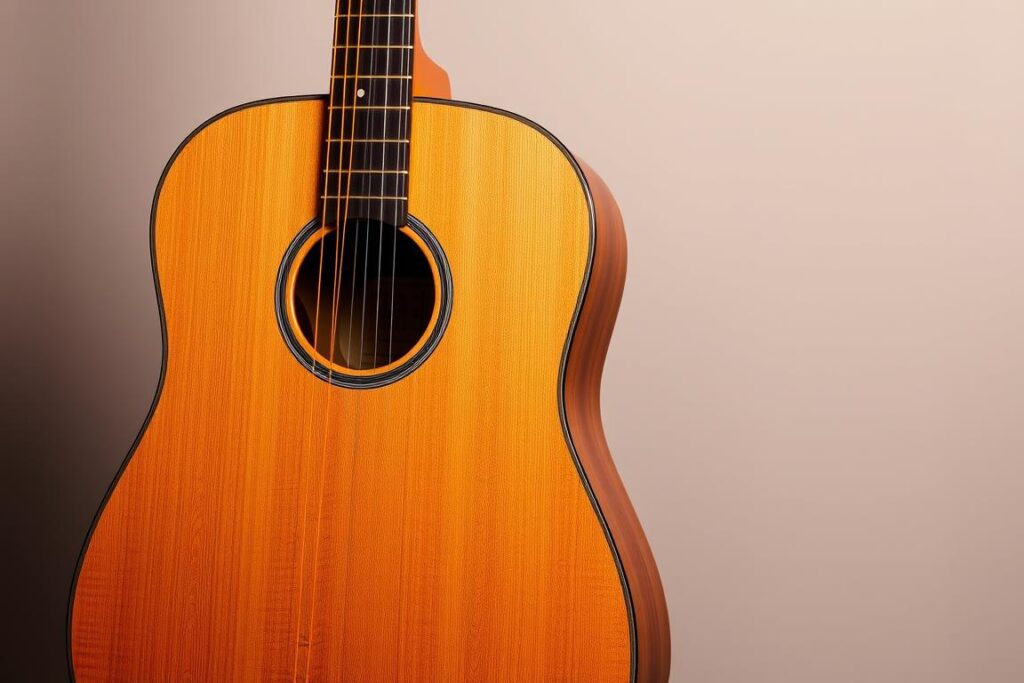
The most common acoustic guitar body style is the dreadnought, known for its balanced tone and projection. Steel-string acoustics are versatile instruments used in folk, country, rock, and pop music. They typically feature a larger body than classical guitars and produce a brighter, more resonant sound.
- Excellent for songwriting and performing without amplification
- Requires no additional equipment to produce sound
- Develops finger strength and calluses more quickly
- Available in various body sizes (dreadnought, concert, jumbo)
- Perfect for folk, country, and singer-songwriter styles
Ready to explore acoustic guitars?
Check out our beginner-friendly acoustic guitar lessons to master the basics.
Electric Guitars
Electric guitars rely on electronic amplification to produce sound. They feature magnetic pickups that convert string vibrations into electrical signals, which are then sent to an amplifier.
- Easier to play due to lighter string tension and lower action
- Versatile sound options through amplifier settings and effects
- Ideal for rock, blues, jazz, metal, and many other genres
- Available in various body styles (solid body, semi-hollow, hollow)
- Allows for a wide range of playing techniques
Interested in electric guitar?
Discover our electric guitar fundamentals course for beginners.
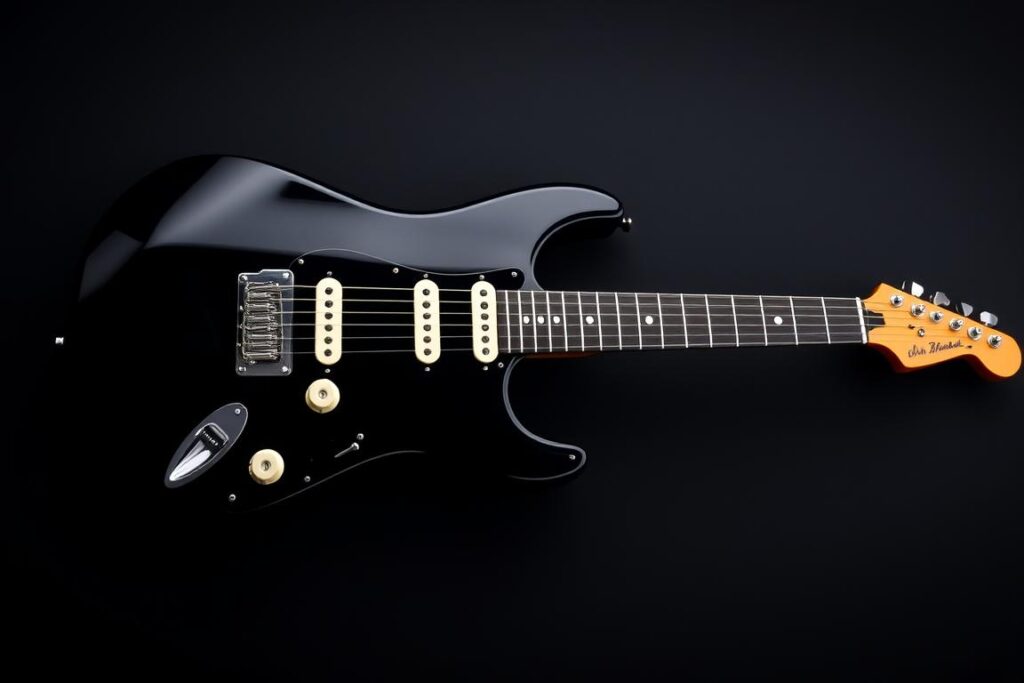
Electric guitars come in several body types, including solid body (like the iconic Stratocaster and Les Paul models), semi-hollow, and hollow body designs. They’re known for their versatility, allowing players to shape their sound through amplification, effects pedals, and playing techniques.
Classical Guitars
Classical guitars feature nylon strings and a wider neck, producing a warm, mellow tone ideal for classical, flamenco, and fingerstyle playing.
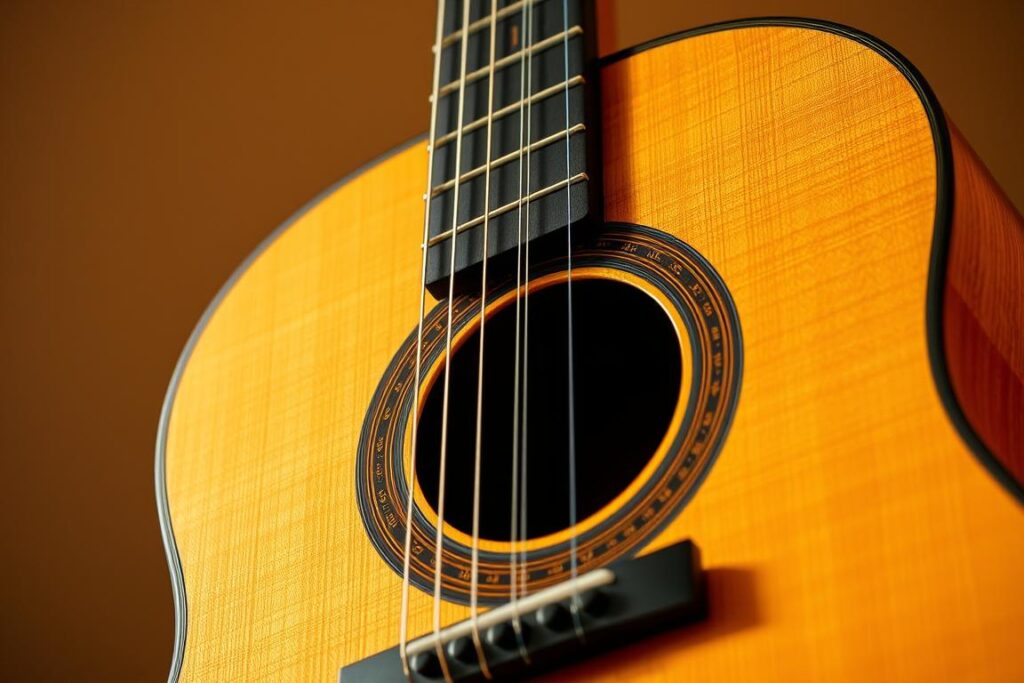
Classical guitars have a distinctive construction with a wider neck to facilitate complex fingerings and a tie-block bridge instead of bridge pins. The nylon strings are gentler on beginners’ fingers compared to steel strings, making them an excellent choice for new players.
- Nylon strings are easier on beginners’ fingertips
- Wider neck spacing accommodates complex fingerings
- Warm, mellow tone perfect for classical and fingerstyle music
- Traditional design with rich historical background
- Excellent for developing proper finger technique
Classical guitar calling you?
Learn proper classical technique with our specialized lessons.
Bass Guitars
Bass guitars typically have four strings tuned an octave lower than the four lowest strings of a guitar. They provide the rhythmic and harmonic foundation in most musical groups.
- Focuses on rhythm and harmonic foundation
- Usually has four strings (though 5 and 6-string versions exist)
- Larger scale length and thicker strings than standard guitars
- Essential for band settings across virtually all genres
- Develops timing and rhythmic awareness
Want to lay down the groove?
Start your bass journey with our beginner-friendly bass lessons.
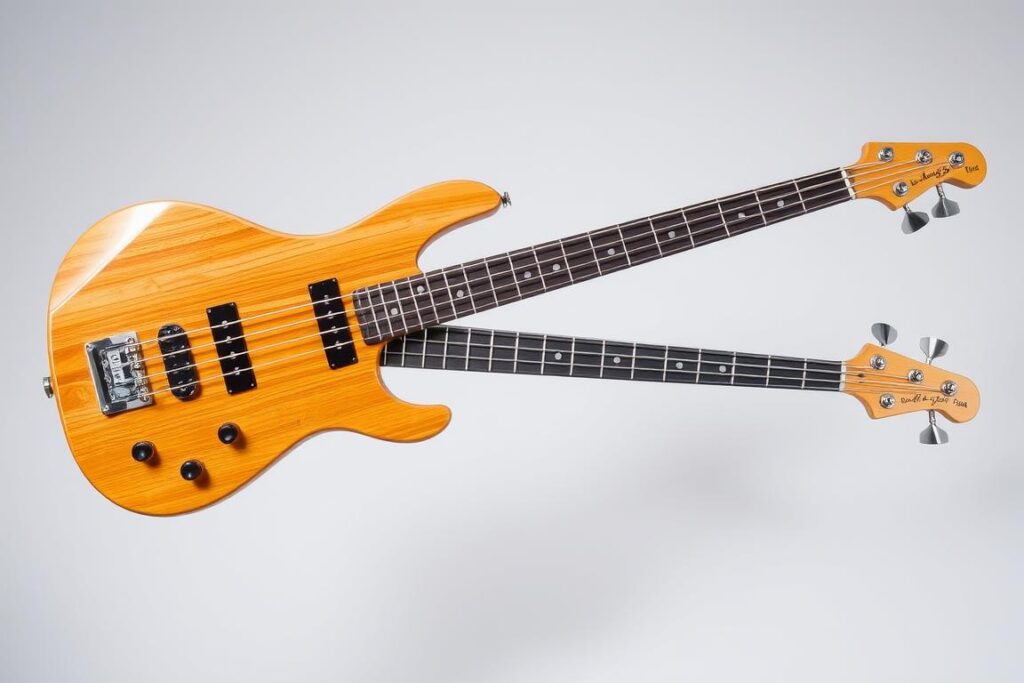
Bass guitars come in both acoustic and electric varieties, though electric bass guitars are far more common. They play a crucial role in bands, providing the rhythmic and harmonic foundation that bridges the gap between percussion and melodic instruments.
| Guitar Type | String Type | Sound Characteristics | Best For | Price Range (Beginner) |
| Acoustic | Steel | Bright, resonant, full | Folk, country, rock, singer-songwriter | $100-$400 |
| Electric | Steel | Versatile, can be shaped with effects | Rock, blues, jazz, metal, pop | $150-$500 |
| Classical | Nylon | Warm, mellow, soft | Classical, flamenco, fingerstyle | $80-$350 |
| Bass | Steel | Deep, resonant, punchy | All band settings, rhythm section | $150-$450 |
Anatomy of a Guitar
Understanding the parts of a guitar is essential for proper maintenance, playing technique, and communication with other musicians. While different types of guitars have variations in design, they share many common components.

| Part | Description | Function |
| Headstock | The top portion of the guitar where the tuning pegs are located | Holds the tuning machines that adjust string tension |
| Tuning Pegs | Mechanical gears attached to the headstock | Adjust string tension to achieve proper pitch |
| Nut | Small strip of bone, plastic, or other material | Guides strings onto the fretboard and helps determine string height |
| Neck | Long wooden extension connecting headstock to body | Supports the fretboard and provides structural integrity |
| Fretboard | Thin piece of wood embedded with metal frets | Surface where fingers press strings to change pitch |
| Frets | Metal strips embedded in the fretboard | Divide the neck into semitone intervals |
| Body | Main resonating chamber of the guitar | Amplifies string vibrations (acoustic) or houses electronics (electric) |
| Sound Hole | Circular opening in the top of acoustic guitars | Projects sound and allows air to resonate inside the body |
| Bridge | Wooden or metal component on the body | Anchors strings to the body and transfers vibrations |
| Saddle | Small strip on top of the bridge | Supports strings and helps determine intonation |
| Pickups (Electric) | Magnetic or piezoelectric transducers | Convert string vibrations into electrical signals |
| Controls (Electric) | Knobs and switches on electric guitars | Adjust volume, tone, and pickup selection |
Electric Guitar Specific Parts
- Pickups: Magnetic devices that convert string vibrations to electrical signals
- Volume and tone controls: Knobs that adjust the guitar’s output
- Pickup selector: Switch that chooses which pickups are active
- Output jack: Connection point for the guitar cable
- Tremolo system: Mechanism that allows pitch bending (on some models)
Acoustic Guitar Specific Parts
- Sound hole: Opening that projects sound and allows air to resonate
- Soundboard: Top piece of wood that vibrates to produce sound
- Bracing: Internal wooden supports that affect tone and durability
- Bridge pins: Small pegs that secure the strings to the bridge (on most models)
- Rosette: Decorative inlay around the sound hole
Master Guitar Terminology
Understanding guitar anatomy is crucial for proper technique. Our comprehensive lessons cover everything you need to know about your instrument.
How to Choose Your First Guitar
Selecting your first guitar is an important decision that can significantly impact your learning experience. The right instrument will inspire you to practice regularly and make the learning process more enjoyable.
“The guitar is the best friend you’ll ever have. It will always be there for you.” – B.B. King

Consider Your Budget
While it’s tempting to purchase the least expensive option when starting out, extremely cheap guitars often have playability issues that can hinder your progress. Conversely, you don’t need to invest in a professional-grade instrument as a beginner.
Budget Tips for Beginners
- Consider buying a starter pack that includes accessories
- Look for holiday sales at major retailers
- Check for gently used instruments at reputable music stores
- Avoid the absolute cheapest options, as they may have playability issues
- Remember that a slightly higher initial investment often means better playability and sound
Match Your Musical Style
Your musical preferences should heavily influence your guitar choice. Different styles of music are better suited to particular types of guitars.
| If You Like | Consider This Guitar Type | Recommended Features |
| Rock, Metal, Blues | Electric (solid body) | Humbucker pickups, tremolo system |
| Folk, Country, Singer-Songwriter | Acoustic (dreadnought or jumbo) | Solid top, steel strings |
| Jazz, Blues | Electric (semi-hollow or hollow) | Humbucker pickups, archtop design |
| Classical, Flamenco, Fingerstyle | Classical (nylon string) | Wide neck, traditional bracing |
| Funk, R&B, Rock Bands | Bass Guitar | 4-string, P or J-style pickups |
Consider Body Size and Comfort
The physical dimensions of a guitar can significantly impact your comfort and ability to play, especially for younger players or those with smaller frames.
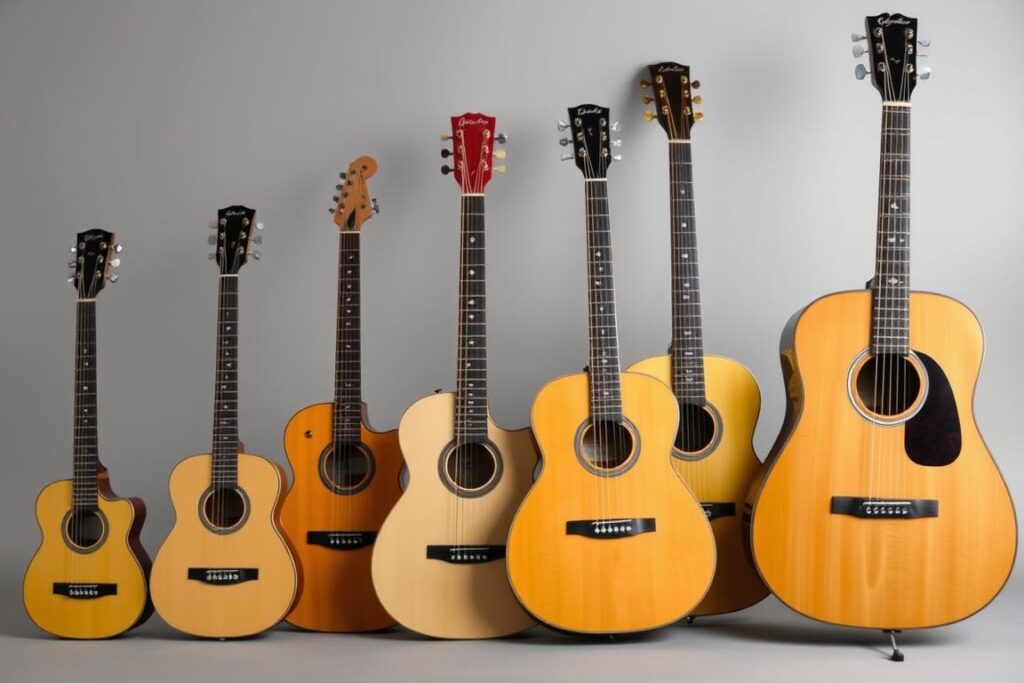
Guitar Size Guide
- 1/4 Size: For children ages 4-6 (height 3’3″ to 3’9″)
- 1/2 Size: For children ages 6-8 (height 3’10” to 4’5″)
- 3/4 Size: For children ages 8-11 (height 4’6″ to 4’11”)
- 7/8 Size: For smaller teens and adults (height 5’0″ to 5’5″)
- Full Size: For most adults (height 5’6″ and above)
When testing a guitar, pay attention to how it feels when sitting down. The body shouldn’t be too large or uncomfortable against your torso, and you should be able to reach around it comfortably to strum.
Test Before Buying
Whenever possible, try out a guitar before purchasing it. Even guitars of the same model can vary in feel and sound. Here’s what to check when testing:
Playability Checklist
- Check the action (string height) – strings should not be too high above the fretboard
- Test for fret buzz by playing each string at different positions
- Ensure the neck is straight, not warped or twisted
- Verify that tuning pegs turn smoothly and hold tension
- Check that all electronics work properly (for electric guitars)
Sound Checklist
- Listen for sustain – how long notes ring out
- Check for even volume across all strings
- Test intonation – notes should sound in tune up the neck
- Assess tonal quality – does it sound pleasing to your ear?
- For electric guitars, test with different amp settings
Need Help Choosing Your First Guitar?
Our expert instructors can guide you through the selection process and help you find the perfect instrument for your needs and budget.
Basic Guitar Maintenance Tips
Proper maintenance extends the life of your guitar and ensures it always plays and sounds its best. Even as a beginner, developing good maintenance habits will save you money and frustration in the long run.
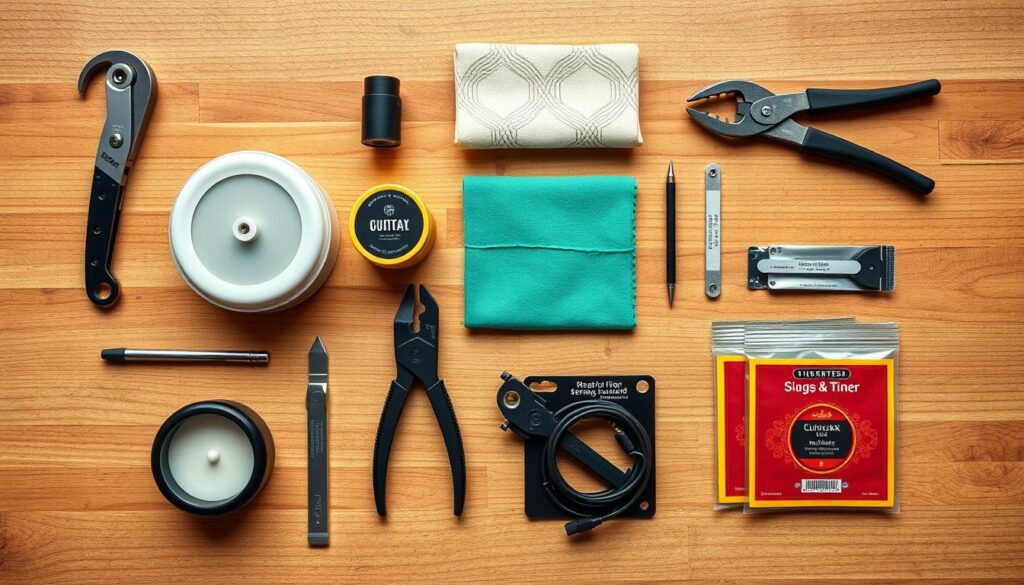
Cleaning Your Guitar
Regular cleaning prevents buildup of oils, sweat, and dirt that can damage your guitar’s finish and components.
What You’ll Need
- Microfiber cloths (for general cleaning)
- Guitar polish (appropriate for your guitar’s finish)
- Cotton swabs (for hard-to-reach areas)
- String cleaner (for extending string life)
- Fretboard conditioner (for unfinished wood)
Cleaning Steps
- Wipe down the strings after each playing session
- Clean the body with a microfiber cloth to remove fingerprints
- Apply guitar polish sparingly to finished surfaces
- Use a slightly damp cloth for stubborn dirt (avoid excess moisture)
- Condition unfinished fretboards 2-3 times per year
Important Cleaning Precautions
- Never use household cleaners or furniture polish on your guitar
- Avoid getting moisture near electronics on electric guitars
- Don’t apply fretboard oil to maple fretboards (which are typically finished)
- Always check product compatibility with your specific guitar type
String Replacement
Changing strings regularly improves tone, tuning stability, and playability. New players should aim to change strings every 1-3 months, depending on how frequently they play.
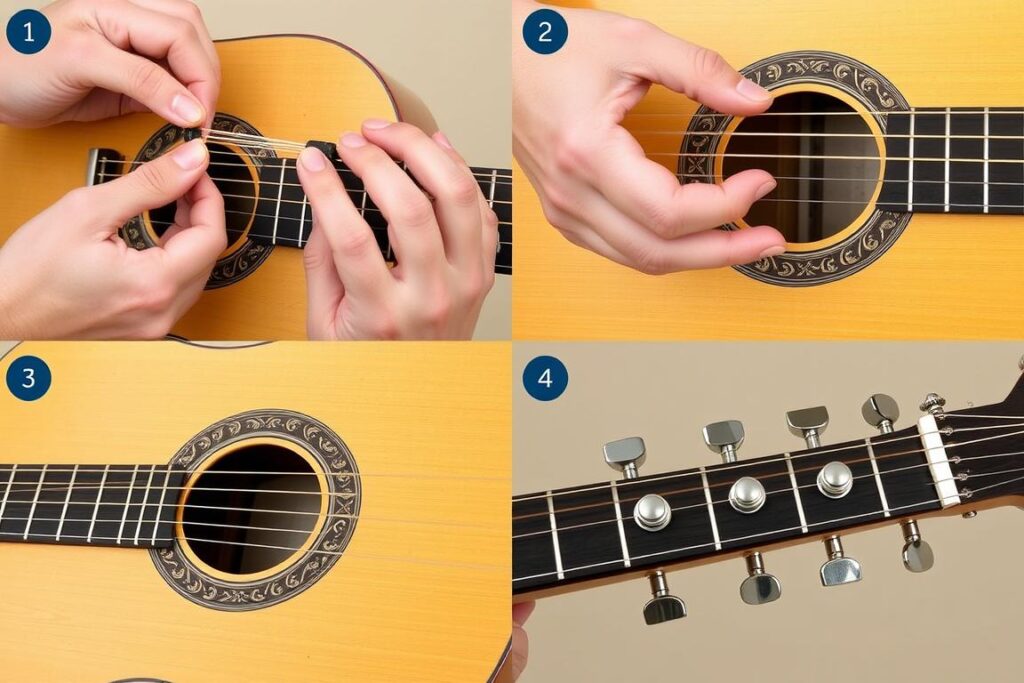
String Replacement Steps
- Loosen and remove old strings one at a time
- Clean areas exposed by string removal
- Install new strings following proper winding technique
- Stretch new strings gently to improve tuning stability
- Tune to pitch and trim excess string length
String Gauge Selection
Beginners often benefit from lighter gauge strings, which are easier on the fingers. For acoustic guitars, consider “light” (.012-.053) or “extra light” (.010-.047) sets. For electric guitars, “light” (.010-.046) or “super light” (.009-.042) sets are good starting points.
Proper Storage
How and where you store your guitar significantly impacts its condition and longevity. Proper storage prevents warping, cracking, and other damage.
Storage Best Practices
- Store in a case or gig bag when not in use
- Maintain humidity between 45-55% (use a hygrometer to monitor)
- Keep away from direct sunlight and heat sources
- Avoid extreme temperature fluctuations
- Use a guitar stand for short-term storage during practice sessions
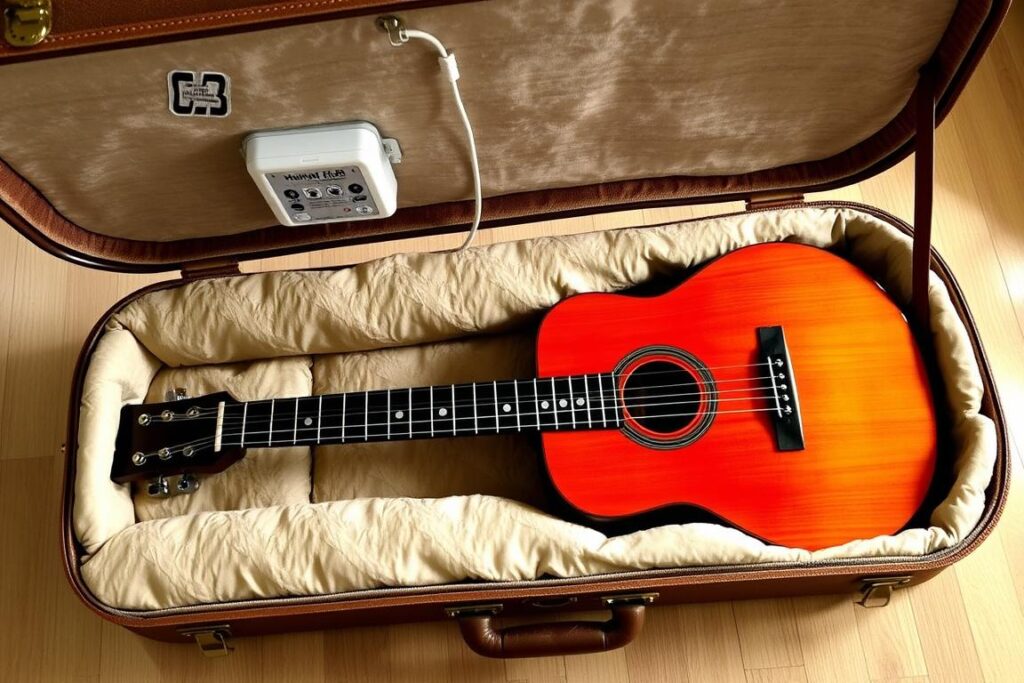
Storage Warnings
Never lean your guitar against a wall or furniture where it can fall. Avoid storing in attics, basements, garages, or car trunks where temperature and humidity fluctuate dramatically.
Basic Setup and Adjustments
While major adjustments should be left to professionals, there are some basic maintenance tasks beginners can learn to keep their guitar playing well.
DIY Maintenance
- Tuning (daily or before each practice session)
- Cleaning and polishing (after playing)
- String changing (every 1-3 months)
- Checking and tightening loose hardware
- Basic intonation checks using harmonics
Professional Maintenance
- Truss rod adjustments
- Action adjustments (string height)
- Fret leveling and dressing
- Nut and saddle adjustments
- Electronics repair and maintenance
Consider having a professional setup done on your new guitar, especially if purchased online. This ensures optimal playability from the start.
Keep Your Guitar in Top Condition
Our maintenance workshops cover everything from string changes to basic setups. Learn how to care for your instrument like a pro.
Top 5 Guitar Brands for Beginners
While there are many excellent guitar manufacturers, some brands consistently produce quality instruments that are well-suited for beginners. Here are five top brands to consider for your first guitar.
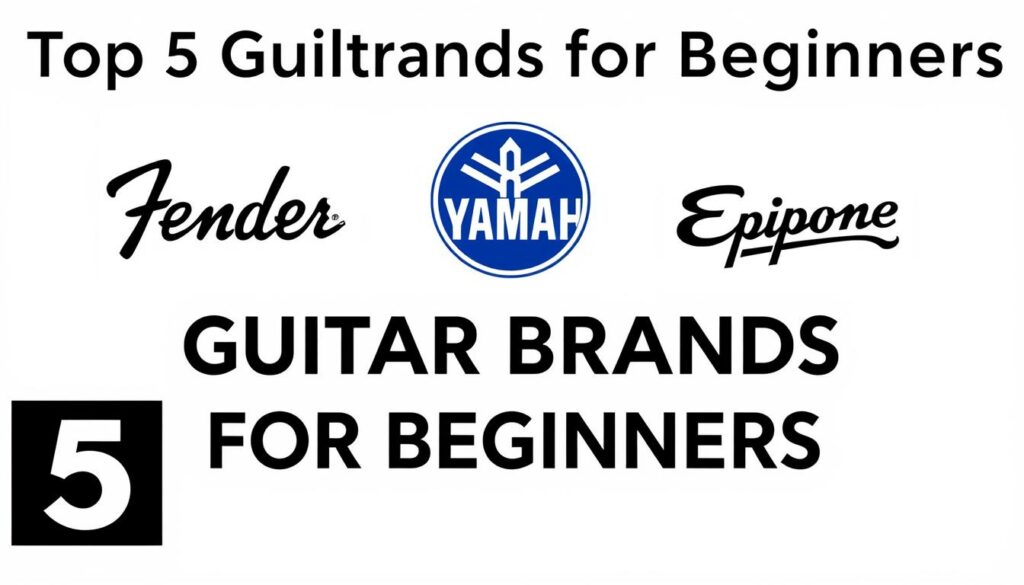
- Iconic brand known for Stratocaster and Telecaster electric guitars
- Offers quality beginner lines like Squier
- Wide range of price points from entry-level to professional
- Excellent resale value
- Known for bright, clear tones
Fender
- Exceptional quality control at all price points
- Outstanding value for beginners
- Produces acoustic, classical, and electric guitars
- Known for consistency and reliability
- Excellent starter acoustic guitars (FG series)
Yamaha
- Subsidiary of Gibson offering affordable alternatives
- Classic designs like Les Paul and SG models
- Good quality hardware and electronics
- Warm, rich tones similar to Gibson guitars
- Great value for money
Epiphone
- Known for fast-playing necks ideal for rock and metal
- Excellent beginner electric guitars (GIO series)
- Good quality control at lower price points
- Versatile sound options
- Modern designs with good ergonomics
Ibanez
- Premium acoustic guitars with exceptional playability
- Academy Series designed specifically for beginners
- Consistent quality and tone
- Comfortable neck profiles
- Higher price point but excellent investment
Taylor
Recommended Beginner Models
Here are specific models from each brand that consistently receive high marks for beginner-friendliness, quality, and value.
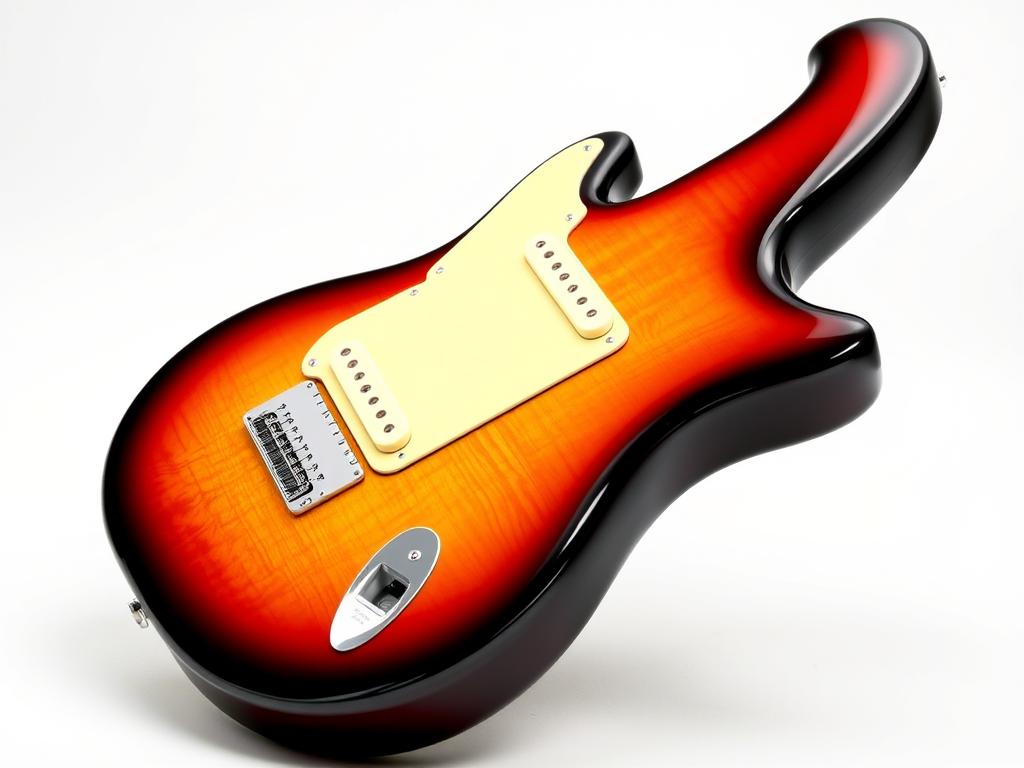
Fender/Squier Affinity Stratocaster
An affordable version of the iconic Stratocaster with good build quality and versatile sound. Perfect for rock, blues, and pop styles.
Price Range: $230-$280
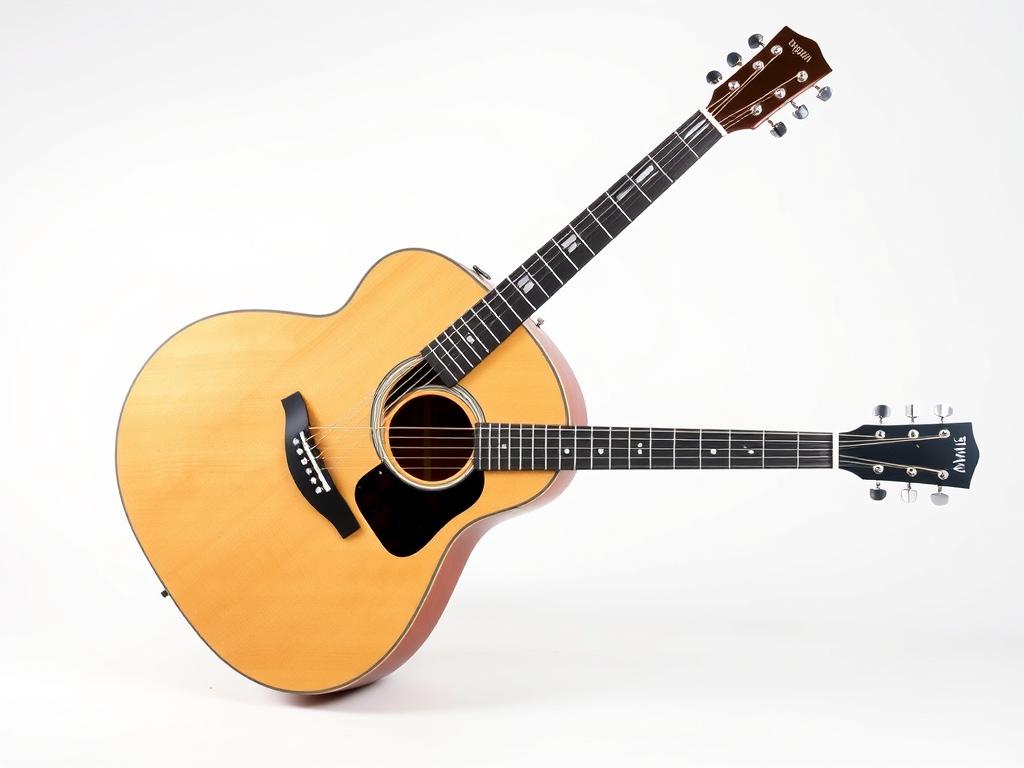
Yamaha FG800
A solid-top dreadnought acoustic with excellent projection and tone. Consistently rated as one of the best beginner acoustics available.
Price Range: $200-$250
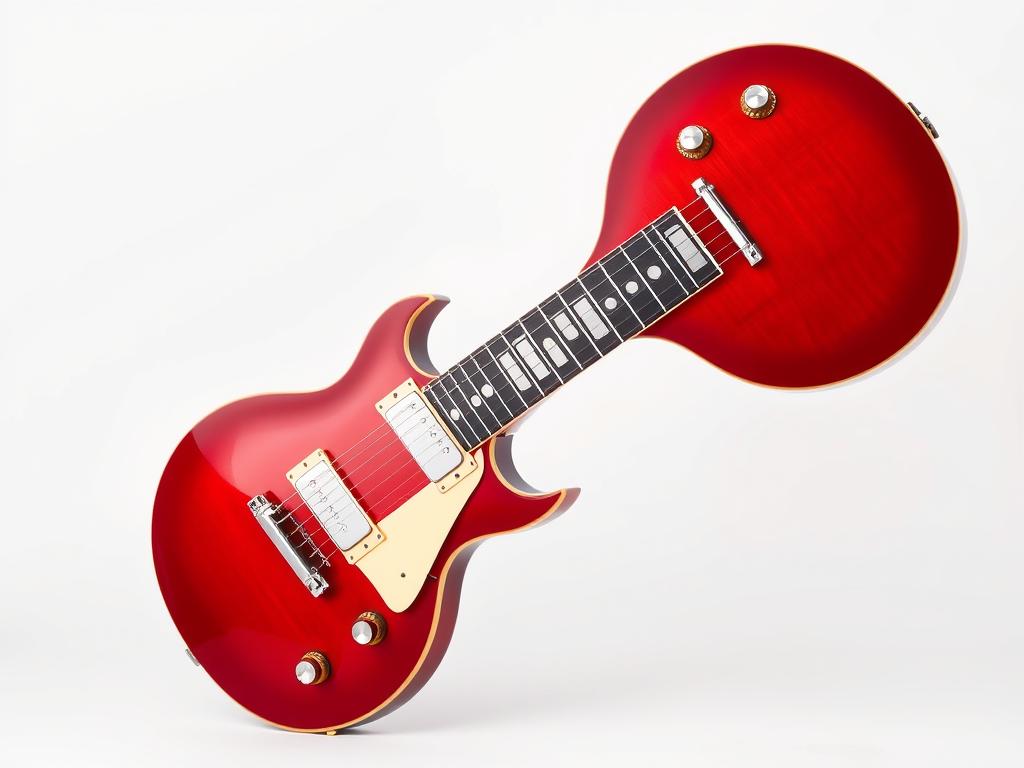
Epiphone Les Paul Studio LT
An affordable version of the legendary Les Paul with dual humbuckers for a rich, warm tone. Great for rock, blues, and jazz.
Price Range: $250-$300
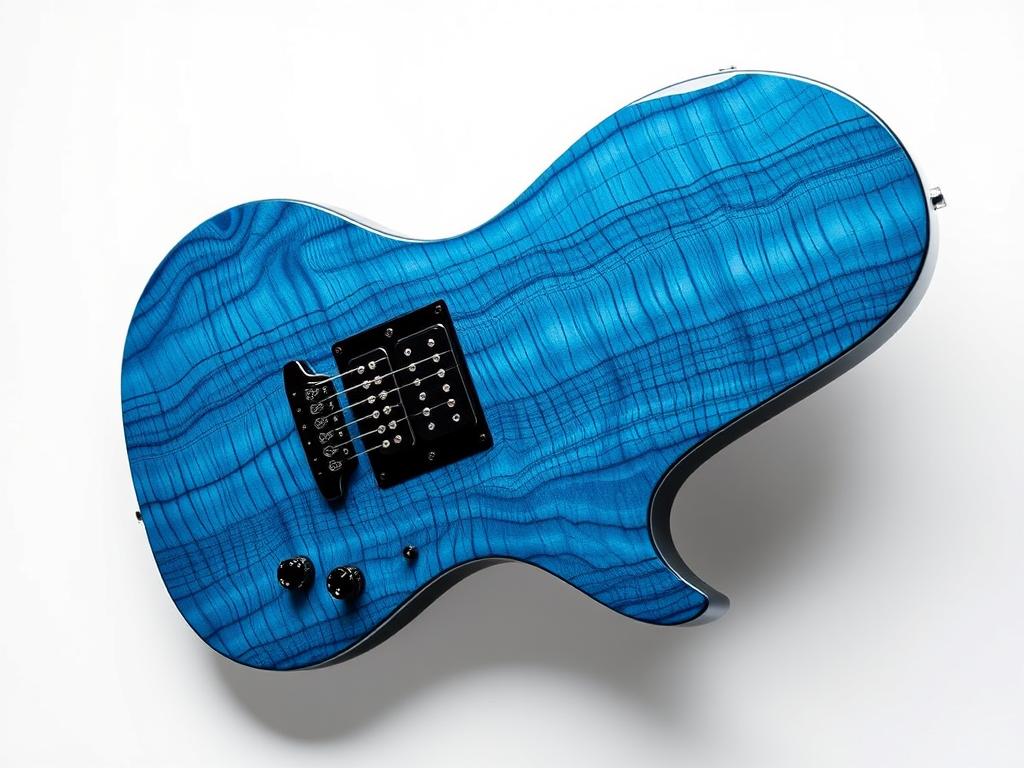
Ibanez GRX70QA
A sleek, modern electric guitar with a comfortable neck and versatile pickup configuration. Excellent for rock, metal, and faster playing styles.
Price Range: $200-$250
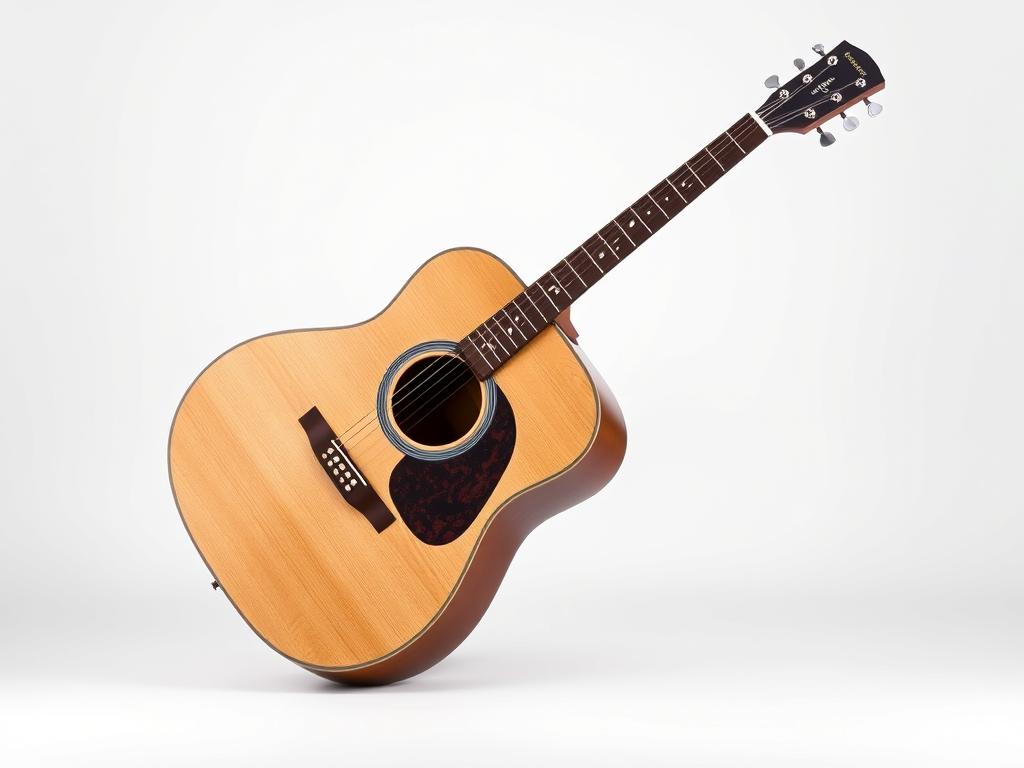
Taylor Academy 10
A premium beginner acoustic with Taylor’s renowned playability and tone. Features an ergonomic armrest for enhanced comfort.
Price Range: $500-$550
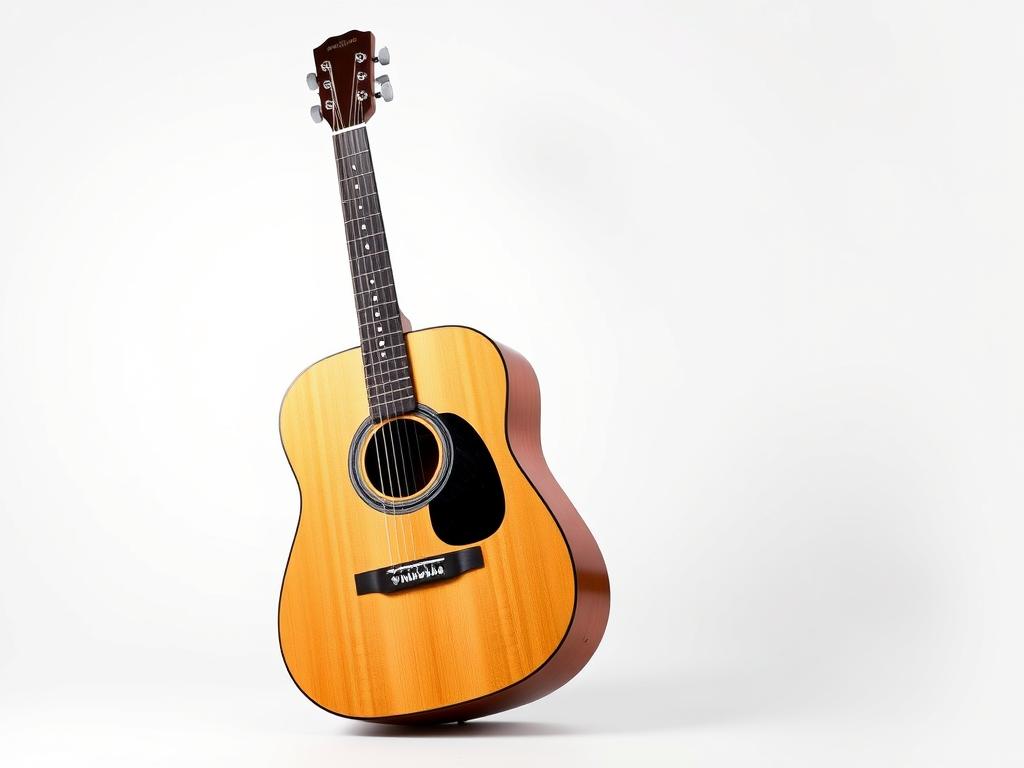
Yamaha C40II
An affordable classical guitar with good tone and playability. Perfect for beginners interested in classical, flamenco, or fingerstyle playing.
Price Range: $150-$180
Find Your Perfect Beginner Guitar
Our instructors can help you select the ideal guitar from these top brands based on your budget, musical preferences, and learning goals.
Conclusion
Embarking on your guitar journey is an exciting step into a world of musical expression and creativity. Whether you choose an acoustic, electric, classical, or bass guitar, the skills you develop will provide a lifetime of enjoyment and personal growth.
“Music is a moral law. It gives soul to the universe, wings to the mind, flight to the imagination, and charm and gaiety to life and to everything.”
Remember that learning guitar is a journey, not a race. Be patient with yourself, practice regularly, and celebrate small victories along the way. The most important factors in your success will be consistency and enjoyment of the process.
Key Takeaways
- Choose a guitar that matches your musical interests and physical comfort
- Invest in the best quality instrument your budget allows
- Develop good maintenance habits from the beginning
- Consider taking lessons to build proper technique
- Be patient and consistent with your practice

Ready to Start Your Guitar Journey?
Our structured beginner lessons will guide you from your very first chords to playing complete songs. Join thousands of successful students who’ve discovered the joy of playing guitar.
How long does it take to learn guitar?
Learning guitar is a lifelong journey, but you can expect to play simple songs within 1-2 months of consistent practice. Most beginners can play basic chords and switch between them smoothly after about 3-6 months. Developing intermediate skills typically takes 1-2 years of regular practice.
Do I need to learn to read music to play guitar?
No, you don’t need to read traditional music notation to play guitar. Many guitarists learn using tablature (tabs), chord diagrams, and by ear. However, learning to read music can expand your musical understanding and opportunities, especially if you’re interested in classical guitar or professional music careers.
Is it better to learn on acoustic or electric guitar?
Both have advantages. Acoustic guitars require no additional equipment and build finger strength quickly. Electric guitars have thinner strings and lower action, making them physically easier to play. The best choice depends on your musical preferences—choose the type that plays the music you love, as you’ll be more motivated to practice.
How often should I practice guitar as a beginner?
Consistent, shorter practice sessions are more effective than occasional long sessions. Aim for 15-30 minutes daily rather than 2 hours once a week. Daily practice helps build muscle memory and keeps your fingertips conditioned. Even 10 minutes of focused practice is valuable on busy days.

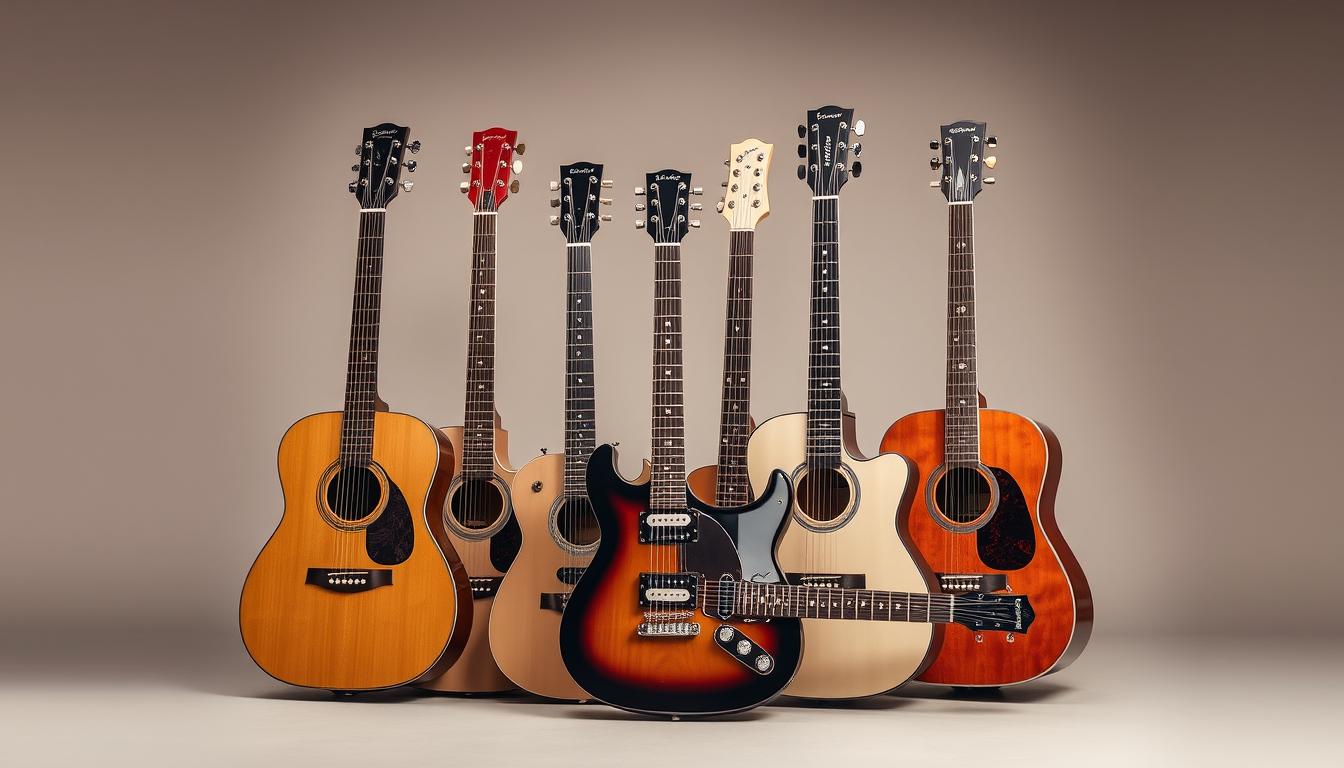
Leave a Reply